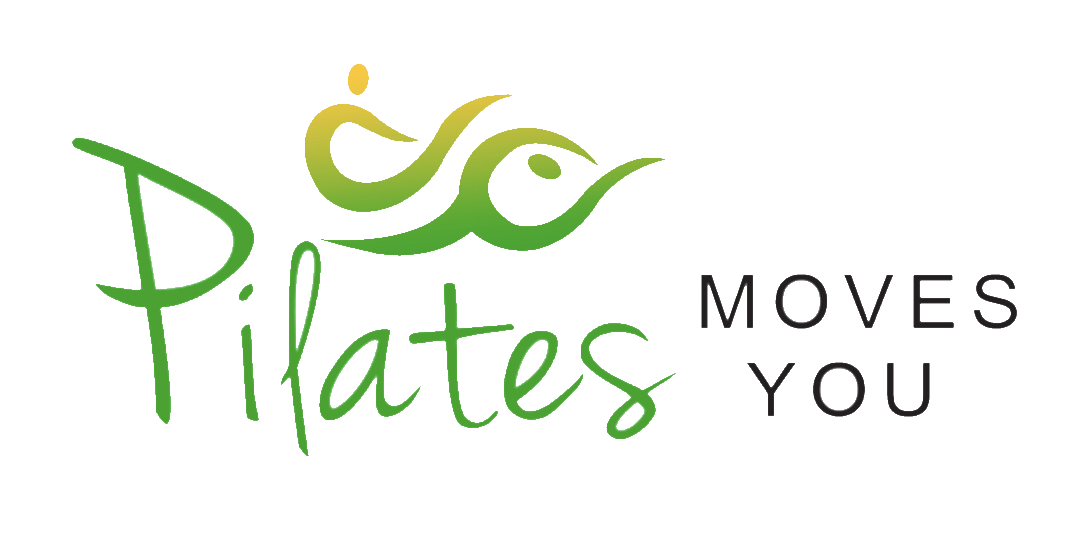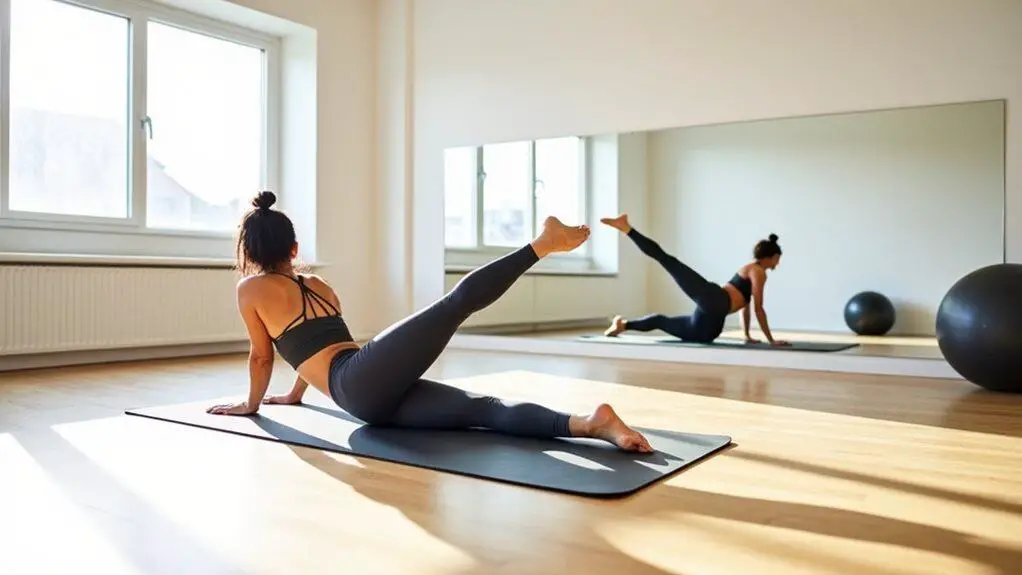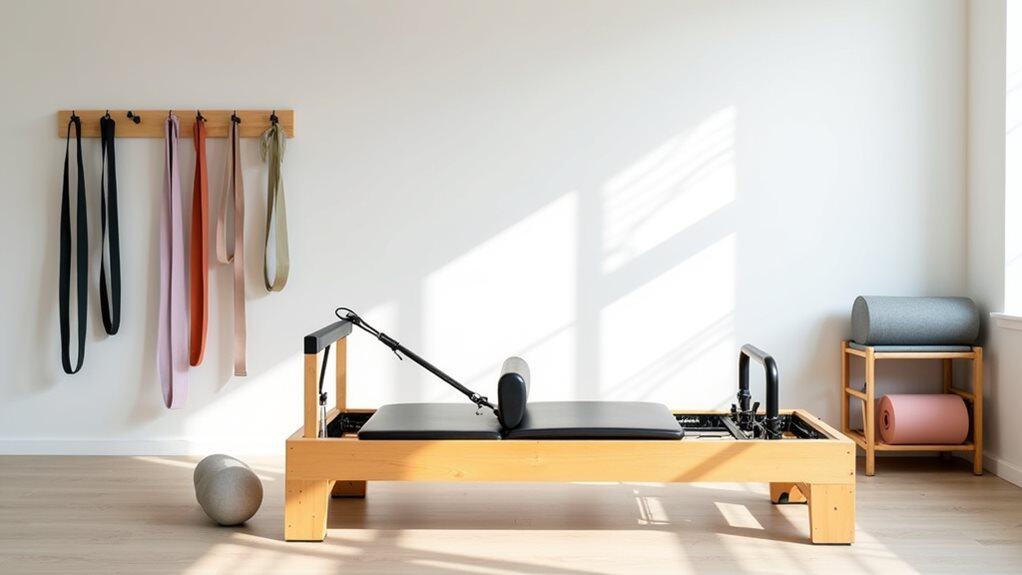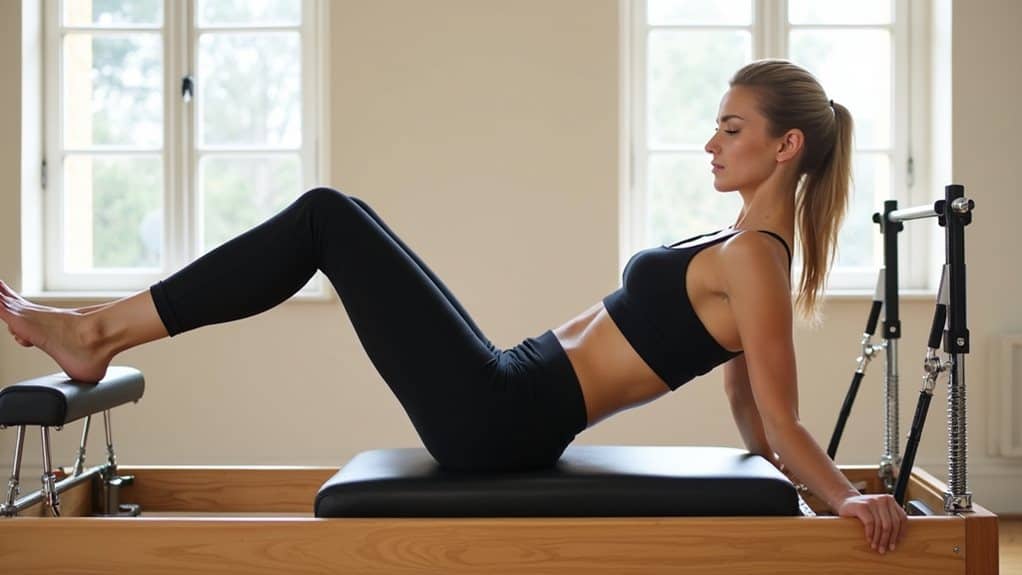Welcome to our guide on Pilates for athletes! If you’re an athlete looking to improve your performance, you may be wondering how Pilates can help you.
Pilates is a technique that focuses on improving flexibility, strength, and range of motion, which are all essential for athletic success. In this section, we’ll explore the benefits of Pilates for athletes and explain how this form of training can take your performance to the next level.
What Is Pilates And How Does It Help Athletes?
Pilates is a form of exercise that emphasizes the development of core strength, flexibility, and stability. It was developed by Joseph Pilates in the early 20th century and has since been adapted and popularized in many different settings, including athletic training.
Pilates can be incredibly beneficial for athletes looking to improve their range of motion, flexibility and overall athletic performance. By incorporating Pilates into their training routine, athletes can target and strengthen key muscle groups, enhance their breathing and focus, and prevent injuries.
Benefits Of Pilates For Athletes
Pilates has several benefits that can help athletes in their training and competition. One of the primary benefits is enhancing range of motion. By improving flexibility, athletes can move their joints through a greater range of motion, leading to improved athletic performance and reduced risk of injury. Pilates can also help athletes develop increased core strength, which is essential for maintaining balance and stability in sports.
Additionally, Pilates can also aid in injury prevention and recovery. By strengthening key muscle groups, Pilates can help athletes prevent common injuries such as ankle sprains, knee injuries, and back pain. Pilates can also be used to aid in recovery and rehabilitation for athletes who have suffered injuries, helping them regain their strength and mobility more quickly.
How Pilates Helps Athletic Performance
Pilates can help athletes improve their athletic performance in several ways. By enhancing range of motion and increasing core strength, Pilates can help athletes move more efficiently and with greater stability, leading to improved performance in sports. Pilates can also improve posture and alignment, helping athletes maintain optimal form during training and competition.
Additionally, Pilates can enhance breathing and focus, which can be beneficial for athletes during competition. By learning how to control their breathing and remain focused during high-pressure situations, athletes can perform at their best and achieve optimal results.
In the next section, we will dive deeper into the specific Pilates exercises that athletes can incorporate into their training to improve their flexibility and range of motion.
Pilates Exercises For Flexibility And Range Of Motion
If you’re an athlete looking to improve your flexibility and range of motion, Pilates can be an excellent addition to your training regimen. Here are some Pilates exercises that are specifically designed to increase your flexibility:
| Exercise | Description |
|---|---|
| Roll Up | Lie on your back with your legs straight and arms extended overhead. Inhale and slowly lift your arms toward the ceiling. Exhale and slowly roll up one vertebra at a time, reaching for your toes with your arms. Inhale and slowly lower back down, one vertebra at a time. |
| Spine Stretch | Sit on the floor with your legs straight and shoulder-width apart. Inhale and lift your arms overhead. Exhale and slowly reach forward, keeping your spine straight. Inhale and slowly sit back up. |
| Single Leg Circles | Lie on your back with your arms out to the sides and legs straight up in the air. Rotate your legs in small circles, keeping your hips stable and your abs engaged. Repeat in the opposite direction. |
These exercises target different areas of the body, including the back, legs, and core, and can help increase your overall flexibility and range of motion. It’s important to remember to breathe deeply and engage your core muscles throughout each exercise for maximum benefit.
It’s also important to note that modifications can be made to each exercise to suit your individual needs and skill level. If you’re just starting out with Pilates, it’s a good idea to start with the beginner level exercises and gradually work your way up to more challenging ones.
Takeaway
Pilates can be a highly effective way for athletes to improve their flexibility and range of motion. By incorporating specific Pilates exercises into your training regimen, you can enhance your overall athletic performance and reduce the risk of injury. Remember to always consult with a professional before starting a new exercise program.
Pilates and Athletic Performance: The Connection
Pilates is a great way for athletes to improve their athletic performance. It targets the core muscles and enhances stability, balance and posture – critical for athletes. In addition, Pilates also improves breathing and concentration, helping athletes remain calm and focused during competition.
The Benefits of Pilates on Core Strength
Pilates exercises focus on the core muscles, including abdominals, back and glutes. By strengthening these muscles, athletes can gain greater control over their movements and improve their overall athletic performance. A strong core is also important for maintaining proper form, which can help prevent injury.
For example, runners with a weak core may experience excessive motion in their hips and spine, leading to lower back pain and a reduction in their running efficiency. Pilates can help runners improve their core strength and reduce these symptoms.
The Benefits of Pilates on Stability and Balance
Pilates exercises also help improve stability and balance, which are critical for athletes in sports like gymnastics, surfing, and snowboarding. By focusing on balance and stability in a controlled environment, athletes can improve these skills and apply them to their sport.
Pilates exercises that target stability and balance include exercises on the reformer, which require athletes to use their core muscles to maintain proper form. As athletes progress, they can add movements that challenge their balance further, such as the single-leg circle and the standing twisted teaser.
The Benefits of Pilates on Posture
Poor posture can lead to back pain, neck pain, and other physical problems for athletes. Pilates exercises help improve posture by strengthening the muscles that support the spine, including the upper back, shoulders, and neck. Pilates also emphasizes proper alignment, which can help athletes maintain good posture during competition and training.
Incorporating Pilates exercises into a daily routine can help athletes improve their athletic performance by enhancing core strength, stability, and posture while improving breathing and concentration. Speak to a Pilates instructor to learn more about the right exercises for your sport and body type.
Pilates For Athletes: Combining With Other Athletic Training
While Pilates is an excellent standalone workout, it can also be integrated with other forms of athletic training. Combining Pilates with other workouts can enhance the benefits of both and create a well-rounded fitness routine.
For athletes that engage in high-impact sports, combining Pilates with strength training can be especially beneficial. Pilates can help improve core strength and stability, which can enhance the effectiveness of weightlifting exercises. Pilates exercises that focus on hip and shoulder mobility can also complement strength training routines that target those areas.
Similarly, for athletes that participate in endurance sports like running or cycling, Pilates can help improve posture and breathing efficiency. Incorporating Pilates exercises that target the back and abdominals can also help prevent common overuse injuries associated with endurance sports.
Ultimately, the key to successfully combining Pilates with other workouts is to find a balance that works for you. Start by integrating one or two Pilates sessions per week and gradually increase over time. Be sure to listen to your body and adjust accordingly.
Pilates Equipment For Athletic Training
Pilates equipment can be a great addition to the training regimen of athletes looking to improve their flexibility, range of motion, and overall athletic performance. Here are some of the most commonly used Pilates equipment:
| Equipment | Description | Benefits |
|---|---|---|
| Mat | A cushioned mat used for floor exercises | Provides padding and support during exercises, easy to transport and store |
| Reformer | A bed-like frame with a sliding carriage and springs | Provides resistance for strength training, helps with alignment and posture |
| Cadillac | A tall frame with a trapeze and springs | Allows for a variety of exercises targeting different muscle groups, great for rehabilitation and injury prevention |
| Chair | A compact piece of equipment with a spring-loaded pedal | Targets lower body muscles, improves balance and stability |
| Barrel | A curved bench used for stretching and spinal alignment | Improves posture, helps with back pain and stress relief |
Incorporating Pilates equipment into your training can add variety to your workouts and help target specific muscle groups. However, it is important to use the equipment correctly and safely. It is recommended to work with a certified Pilates instructor to ensure proper form and technique.
Tips for Choosing Pilates Equipment
When choosing Pilates equipment, consider your specific athletic goals and needs. If you are looking to add resistance training to your routine, a reformer might be a good option. If you are recovering from an injury, a Cadillac might be more beneficial. It is also important to consider the space and budget you have available for equipment.
Pilates For Injury Prevention And Recovery
Pilates is an effective form of exercise that can aid in injury prevention and recovery for athletes. By incorporating Pilates into their training regimen, athletes can improve their flexibility, strength, and posture, which can reduce their risk of injury.
Furthermore, Pilates can help athletes recover from injuries by strengthening the muscles surrounding the injured area and improving flexibility, coordination, and balance. Pilates exercises can also help athletes maintain their fitness levels while they are recovering from an injury.
Some common sports injuries that Pilates can help with include ankle sprains, knee injuries, and back pain. Pilates exercises can help alleviate pain and discomfort, promote healing, and prevent the injury from recurring.
For athletes who are undergoing rehabilitation, Pilates can be used in conjunction with other forms of therapy, such as physical therapy or chiropractic care. The low-impact nature of Pilates makes it a suitable exercise for athletes who are recovering from an injury or surgery.
It is important for athletes to consult with their healthcare providers before starting any new exercise program, especially if they are recovering from an injury. A Pilates instructor who is trained in working with athletes can create a customized program that is tailored to their specific needs and goals.
The Benefits Of Pilates For Different Types Of Athletes
Pilates is a versatile technique that can benefit athletes of all types. Here are some examples of how Pilates can enhance the training and performance of different types of athletes:
Runners
Pilates can help runners improve their balance, stability, and posture, which can lead to better running form and reduced risk of injury. Pilates exercises that focus on the core, hips, and legs can also help with stride length and speed.
Swimmers
Swimmers can benefit from Pilates exercises that promote better breathing techniques, as well as those that strengthen the muscles in the shoulders, back, and hips. These exercises can help swimmers increase their range of motion and improve their stroke technique.
Gymnasts
Pilates can help gymnasts improve their flexibility, balance, and core strength, which are critical for performing skills such as cartwheels, handstands, and flips. Pilates exercises that focus on the legs and ankles can also help with landing and takeoff in tumbling passes.
These are just a few examples of how Pilates can benefit different types of athletes. By incorporating Pilates into their training, athletes can improve their overall performance and reduce their risk of injury.
Incorporating Pilates Into Your Athletic Lifestyle
Now that you know the benefits of Pilates for athletes, it’s time to incorporate it into your daily routine. Here are some tips to get started:
- Schedule Pilates sessions into your calendar: Treat Pilates as you would any other training session or practice. Block out time in your calendar so that you make it a priority and don’t miss a session.
- Start with a basic routine: If you’re new to Pilates, start with a basic routine that includes exercises for your core, legs, and arms. Gradually increase the intensity and complexity of your workouts as you gain more experience.
- Find a qualified Pilates instructor: Working with a qualified instructor can help you learn the correct form and avoid injury. Look for instructors who are certified by a recognised Pilates organisation.
- Combine Pilates with other forms of training: Pilates can be a great complement to other forms of training, such as weightlifting, running, or swimming. Incorporate Pilates into your existing routine to enhance your overall fitness.
- Stay consistent: Like any form of training, consistency is key. Try to do Pilates at least two to three times a week, and stick with it even when you’re busy or travelling.
Remember, Pilates is a low-impact form of exercise that can benefit athletes of all levels. By incorporating Pilates into your athletic lifestyle, you can improve your flexibility, range of motion, and overall performance.
Common Misconceptions About Pilates For Athletes
Despite the numerous benefits of incorporating Pilates into an athlete’s training regimen, there are still some common misconceptions surrounding the practice. Let’s examine some of these misconceptions:
Myth: Pilates is only for women.
Fact: While Pilates was initially developed by a man – Joseph Pilates – and was originally popular among ballet dancers, it is now widely used by male athletes across a range of sports. Pilates can help athletes of all genders improve their flexibility, range of motion, and core strength.
Myth: Pilates is only for low-impact workouts.
Fact: Pilates can be as challenging or gentle as the athlete wants it to be. The practice can be adapted to different levels of fitness, allowing athletes to engage in high-intensity workouts or more relaxed sessions, depending on their personal preferences and goals.
Myth: Pilates is not suitable for athletes who are already fit and flexible.
Fact: Even athletes who are already fit and flexible can benefit from incorporating Pilates into their training. Pilates can help athletes strengthen their core and improve their balance, which can translate into better performance in other sports. Additionally, Pilates can help athletes to prevent injuries and recover from them more quickly.
Now that we have debunked these common misconceptions, athletes can feel more confident in exploring Pilates as a way to enhance their athletic performance.
Pilates For Athletes FAQ
If you’re considering incorporating Pilates into your athletic training, you may have a few questions. Here are some frequently asked questions about Pilates for athletes:
What are some common Pilates exercises for athletes?
There are many Pilates exercises that can be beneficial for athletes. Some common exercises include the Pilates roll-up, single-leg stretch, and spine stretch forward. These exercises help improve flexibility, core strength, and posture.
How often should athletes do Pilates?
The frequency of Pilates sessions depends on your fitness goals and training schedule. Some athletes may benefit from doing Pilates once or twice a week, while others may find it helpful to incorporate Pilates into their daily routine. It’s important to listen to your body and consult with a Pilates instructor to create a plan that works best for you.
Can Pilates help with injury prevention?
Yes, Pilates can be an effective form of injury prevention. The exercises focus on improving flexibility, core strength, and balance, which can help prevent injuries. Pilates can also be used as part of a rehabilitation plan to aid in injury recovery.
Do I need any equipment for Pilates?
While Pilates equipment can enhance your workout, it is not necessary. Many Pilates exercises can be done using just a mat. As you progress in your practice, you may want to incorporate equipment such as the reformer or stability ball.
Is Pilates just for women?
No, Pilates is not just for women. Athletes of all genders can benefit from Pilates. The exercises focus on improving flexibility, core strength, and balance, which are important aspects of athletic training for any athlete.
Can Pilates improve my athletic performance?
Yes, Pilates can improve athletic performance. By improving flexibility, core strength, and balance, Pilates can help athletes move more efficiently and effectively, ultimately leading to better performance in their respective sports.
Don’t be afraid to give Pilates a try and see how it can benefit your athletic training. Consult with a Pilates instructor to create a plan that works best for you and your fitness goals.




